How to do a crunch
A personal trainer explains how to do a crunch and the benefits of crunches for beginners
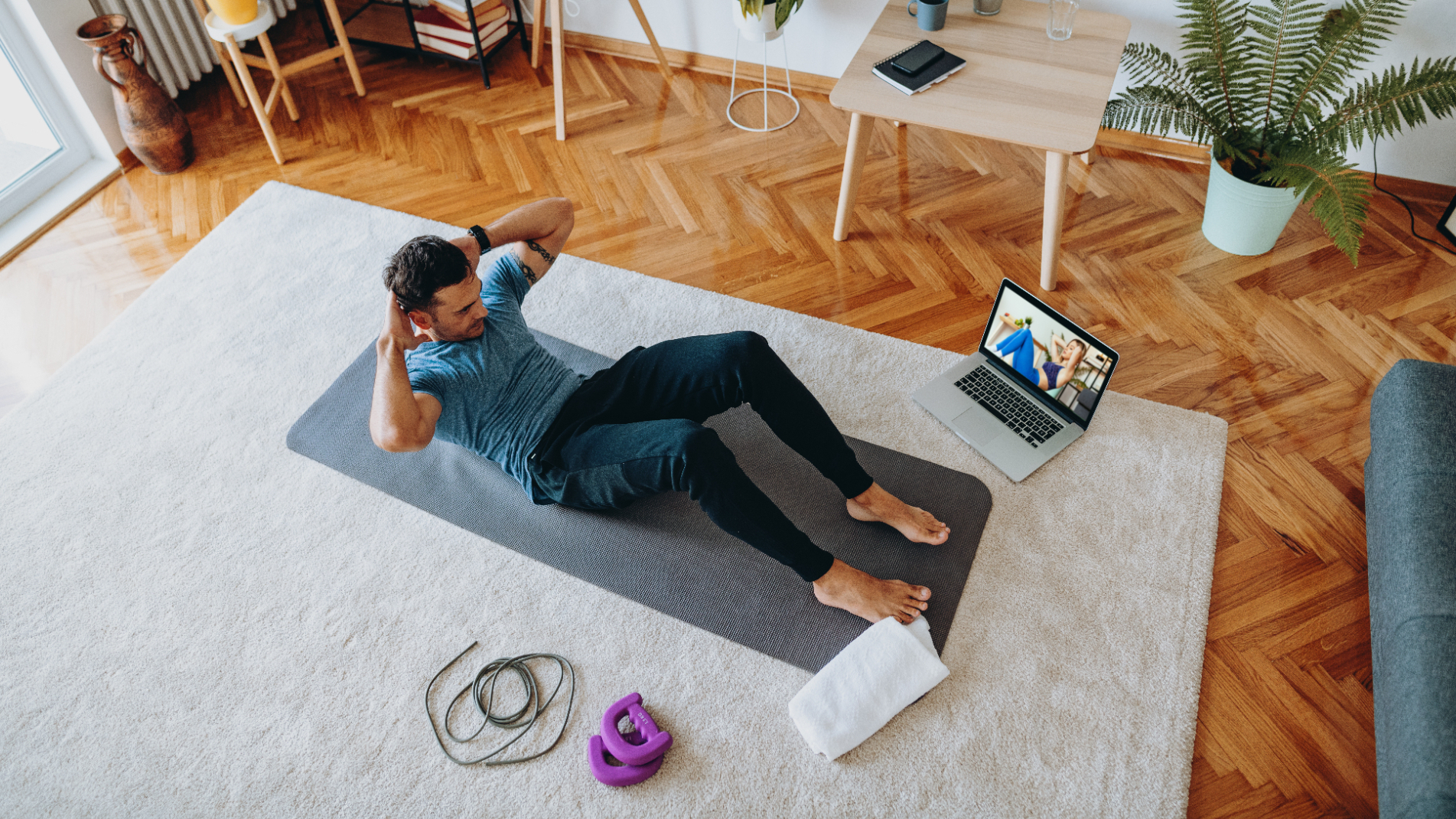

Many beginners have a general understanding of crunches, but it’s important to know how to do a crunch properly. When performed correctly, crunches can help strengthen your abs.
They also build an important mind-body connection that will engage your core muscles during everyday functional activities such as walking, climbing stairs, carrying groceries, and getting into or out of your car.
Even so, despite being a classic ab exercise, crunches can often get a bad rap. Many fitness experts seem to favor more advanced core exercises such as planks or complicated rollouts using the best ab rollers. Yet, for beginners, they are a great way to start.
To assist and to help you learn more about the benefits of crunches for beginners, as well as how to do a crunch properly and the numerous variations on the basic crunch exercise, we spoke with Jason Deutchman, a NASM-certified personal trainer who specializes in functional movement training.

Jason Deutchman is a former professional basketball player and NASM-CPT, who specializes in functional movement training and injury prevention. He has over five years' experience as a trainer in the health and wellness space along with a previous career in athletics. In addition to hit PT work, he also founded US-based brand Yoga Strong.
How to do a crunch
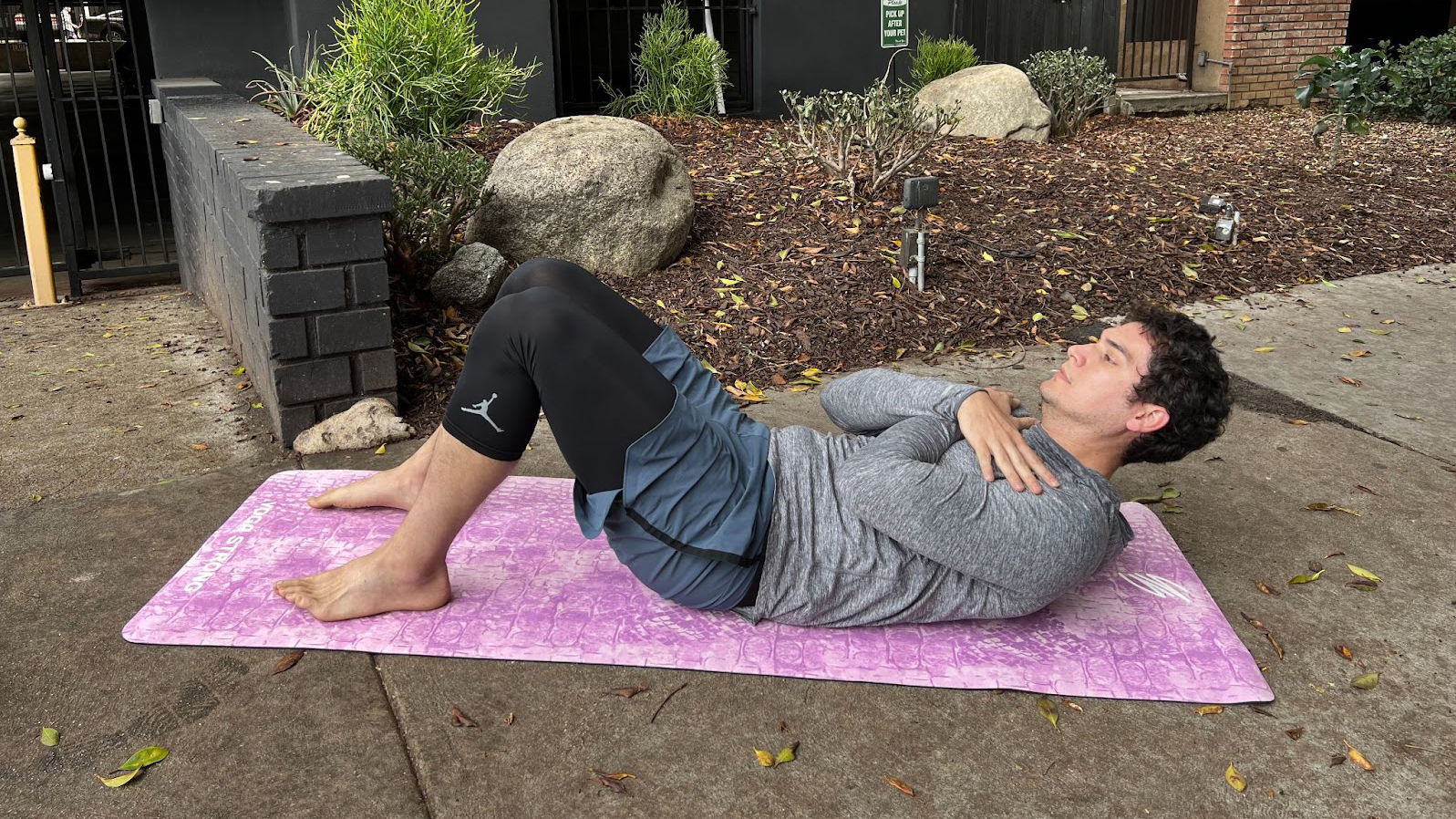
Deutchman explains how to properly do a crunch to maximize the effectiveness of the exercise:
- Lie on your back with your knees bent and feet planted on the floor hip-width apart.
- Place your arms across your chest, not behind your head (to protect your neck).
- Contract your abs so your lower back is firmly pressing into the ground.
- On an exhale, use your abs to lift your shoulders and chest off the ground while keeping your head and neck relaxed.
- With control, return to the neutral starting position and repeat.
Crunch variations to try
After you have mastered the basic abdominal crunch, you may want to add a little variety into your strength training program. Consider trying one of these crunch variations:
Reverse crunches
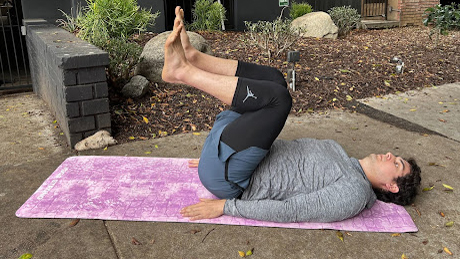
Deutchman says that reverse crunches target the lower abs and hip flexors (the muscles at the front of your hip that help lift your leg up) and are a great alternative to avoid straining your neck because there is no spinal flexion. Your back stays flat on the floor the whole time.
Start your week with achievable workout ideas, health tips and wellbeing advice in your inbox.
- Lie on your back with arms by your sides and feet on the ground with your knees bent.
- Firmly press your lower back into the ground and engage your abs.
- Maintaining a 90-degree angle in your knees, lift your feet off the ground and bring your knees toward your face. Make sure to keep your spine firmly pressed on the ground.
- It’s imperative to keep your lower back pressed into the ground the whole time.
Bird Dog Crunches
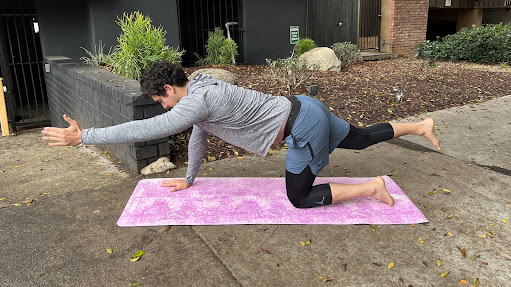
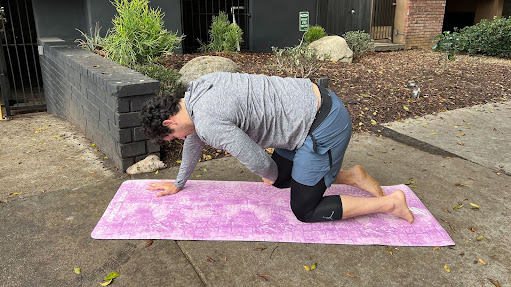
“This variation requires more core stability and balance, while also utilizing the glutes and spine for a more holistic core exercise,” explains Deutchman.
- Start on all fours on the ground in tabletop position (hands under your shoulders and knees on the ground under your hips, back flat).
- Reach your left arm out in front of your body, straightening it out, and extend the opposite (right) leg back behind you at the same time. Keep your core tight to stabilize your body.
- Next, draw your left hand and right knee towards your center to touch so your spine and hip are flexed. Maintain your balance.
- Continue reaching your left hand and right knee apart extended in front of your body and then drawing them back in to touch under your torso 10 times.
- Then switch sides and perform the same movement pattern with the right arm and left leg.
Standing Cross Body Crunch
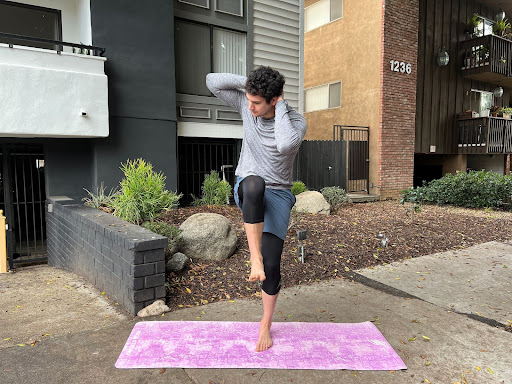
“Standing crunch exercises can be a more functional alternative to ground-based exercises,” explains Deutchman. “The standing cross body crunch hits the abdominals, obliques, and hip flexors, while also challenging your balance and stability.”
- Stand with your feet shoulder-width apart, and your hands interlaced behind your head.
- Take your left elbow and bring it towards your right knee. At the same time, bring your right knee across your body towards your left elbow to meet and touch at approximately waist height. Your spine and hip should both be flexed.
- Return to the standing neutral position and repeat 10 times.
- Switch sides to bring your right elbow to your left knee.
Tips for doing crunches
It’s important to perform crunches safely and Deutchman says this means avoiding strain on your neck.
“Be careful when interlacing your fingers behind your head when performing crunches, as this will encourage your neck into flexion and do work that your abs should be doing,” he advises. “Instead, cross your arms across your chest and you’ll find your abs will fatigue a lot quicker.”
Although crunches can be a good exercise for beginners, there are some alternative core exercises that can be even more effective and will help improve the functional strength and mobility of your core.
“Your exercise level can help determine whether crunches are a sufficient exercise for abdominal training, or you may need more advanced moves to attain your goals,” shares Deutchman. “More advanced moves may include plank variations, medicine ball throws, and using weights to escalate the load and intensity of a crunch.”
Overall, although crunches are often considered a poor core exercise by more advanced athletes, this beginner-friendly ab exercise shouldn’t necessarily be overlooked.
Crunches have their value, particularly when you are just getting started on your fitness journey. Just make sure to use proper form.
Go slowly with the movement and engage your abs. There’s no prize for doing more reps either; rather, you’ll get more benefit from slowing down, doing fewer reps, and mastering the proper form and technique.
Crunch FAQs
Which muscles are worked by crunches?
Although you don’t need to be an anatomy buff to properly perform exercises using the right muscle groups, it’s helpful to understand the muscles worked by any exercise. This can help bring your awareness to the muscles you should be engaging as you perform an exercise and it can also ensure that you are doing well-rounded workouts that target all the major muscles in the body.
“Crunches are a mostly isolated movement, mainly working the rectus abdominis muscle, while secondarily working the obliques and transverse abdominis,” Deutchman says.
In layman’s terms, crunches primarily work the main abdominal muscle that run down the center of your stomach (the rectus abdominis), or the one we think of when we talk about “six-pack abs.”
They also engage the muscles on the side of your trunk (the obliques), which help you to bend to one side, as well as the deep core muscle — the transversus abdominis — which wraps around your entire trunk in a 360-degree fashion. This key core muscle functions somewhat like a corset, helping to stabilize your entire core to support your spine.
Deutchman says that strengthening all of these abdominal muscles through crunches will improve not only your athletic performance, but also your functional movements for everyday life.
“Exercise in general has a myriad of health benefits, such as improving lung capacity, increasing cardiovascular output, and boosting your lung capacity, but specifically targeting your abs can have a compound effect of improving posture, decreasing risk of acute or chronic injury, and improving movement,” he says.
“The abs are a pillar of the entire body, helping connect the upper and lower body, which is why it’s often referred to as ‘core.’ As a result, the benefits of training your abdominal wall can support you no matter your lifestyle.”
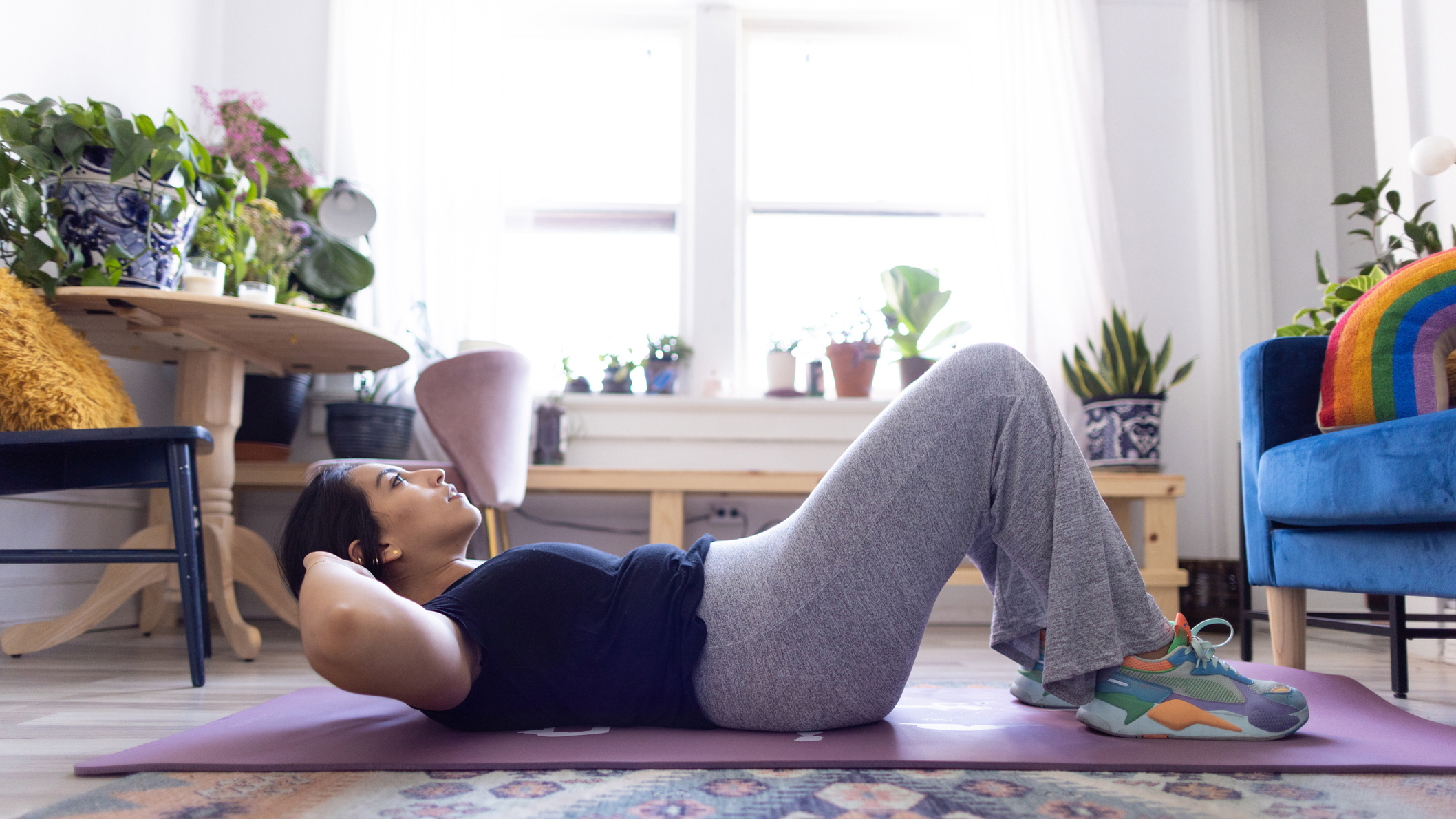
Should beginners do crunches?
Everyone needs to start somewhere on their fitness journey and jumping into advanced core exercises such as planks and Russian twists using a medicine ball can be overwhelmingly difficult. But crunches are a beginner-friendly ab exercise that can make your first several weeks of workouts more approachable.
“Crunches can be an effective tool for beginners to learn how to properly engage their abdominal muscles,” notes Deutchman. “If performed with correct form, crunches will not strain the back or hip muscles, making them a good option for beginners that should focus on preventing injury.”
Crunches are also more effective than full sit-ups, according to Deutchman, despite sometimes being dismissed as being a useless ab exercise.
“Often, sit-ups engage the hip flexors more, while crunches can better isolate your abs, making them a better option than sit-ups for strict abdominal strength,” he says.
Ultimately, as long as you do not have a medical reason that means you must avoid flexing your spine, such as osteoporosis, degenerative spinal arthritis, disc herniations, or spinal stenosis, crunches can be a safe and useful ab exercise for beginners.
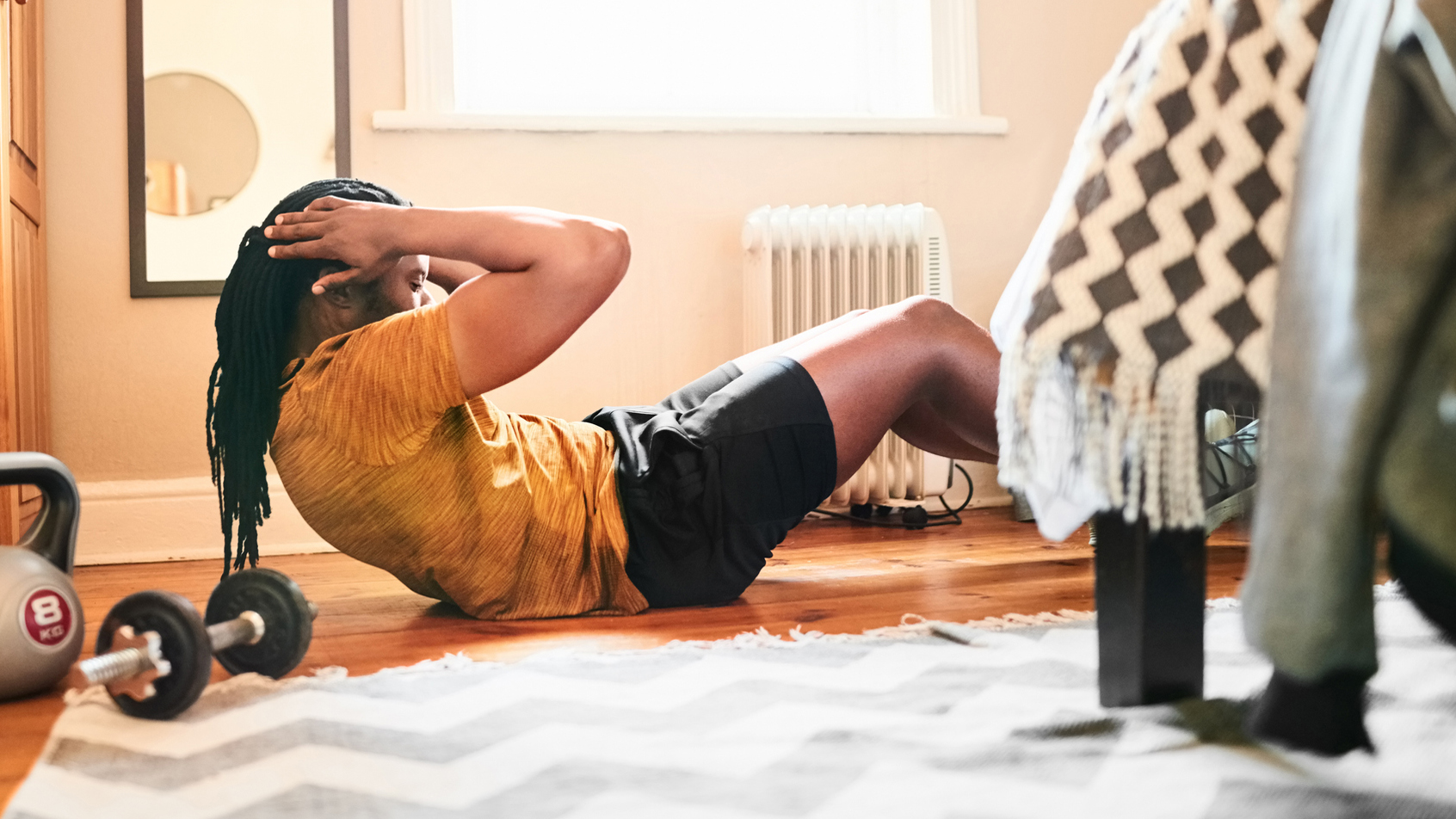
Are crunches effective?
There are many benefits of performing crunches. “Since the strength in your abs influences the health of your spine, developing resilience and robustness in the abdominals can help prevent back pain,” explains Deutchman, citing one example.
“When your spine isn’t receiving the right inputs of movement through flexion, extension, lateral flexion, and rotation, it is more likely to stiffen up and cause back pain.”
Deutchman further suggests that regularly performing crunches not only strengthens the abs, but also encourages the maintenance of normal healthy range of motion in the spine, which in turn can potentially prevent injuries and back pain.
“If you have more range of motion in your midsection from working your abs, your back has more capacity to move without restrictions,” he says. “If there are movement restrictions, that can result in painful back issues, such as muscle strains, pinched nerves, and disc issues. Consequently, crunches for beginners can be a great tool to prevent back pain.”
Do crunches burn belly fat?
According to Ailin Salem, personal trainer and owner of The Healthy Habitat, crunches don't burn belly fat.
"There is no exercise that burns subcutaneous fat (the fat that lies under the skin, which is the fat you can grab) in any particular area of the body because you can't 'spot reduce' fat or choose from where on your body you lose fat," she says.
If you want to lose belly fat, you need to lose body fat overall. For some, the tummy area might be the last area that loses fat. "The lower your body fat percentage is, the more visible your abs will be," adds Ailin.
She recommends maintaining a calorie deficit, which means consuming fewer calories than you burn. "The phrase' abs are built in the kitchen' was popularised because the only way to lose belly fat is to lose body fat.
"And that's done by maintaining a calorie deficit dependent almost entirely on your diet. The most logical way to lose weight is to calculate your TDEE (total daily energy expenditure) [using a TDEE Calulator] and work down from that number," she adds.
While crunches can contribute to calorie burning, they are unlikely to put you in much of a deficit. Adding in other exercises that burn more calories will help to ensure you remain in a calorie deficit.
Research has also found that crunches and other ab-based exercises won't burn belly fat. A study in the Journal of Strength and Conditioning Research found that six weeks of abdominal exercise training alone was not enough to reduce abdominal subcutaneous fat.
"There are other factors that contribute to belly fat which include lack of sleep and stress, so it's important to be mindful of those habits as well," adds Ailin.
Reducing stress can improve your physical and mental wellbeing. One of the lowest-cost ways is to develop mindfulness and learn how to meditate or take on some yoga stretches for beginners to strengthen the connection between your body and mind.
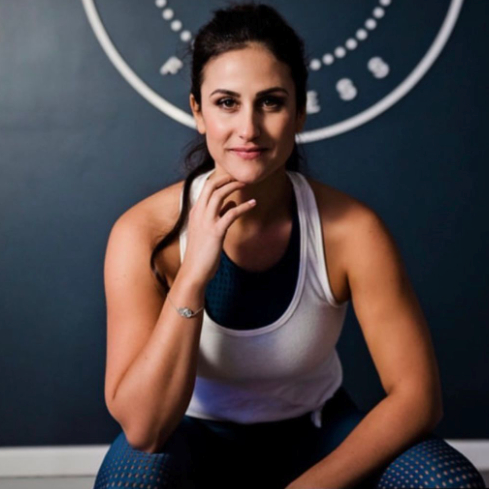
Ailin Salem is a certified personal trainer and the owner of The Healthy Habitat, a concierge in-home personal training company. Salem focuses on movement, mindset, and manifestation to guide her clients and group classes.
Do crunches build abs?
Ailin says that crunches and other core-strengthening exercises can develop your abdominal muscles, which are crucial for improving balance and stability. However, "exercise alone will not improve the appearance of six-pack abs if there is fat over the area."
So, regularly practicing crunches can strengthen your abs and core, but they'll only become visible if you lower the fat around your belly. If a six-pack is your goal, you'll need to train your mid-section, take high-intensity HIIT workouts for fat loss, and stay in a calorie deficit.
"They [crunches] actually isolate your abdominal muscles and obliques for a targeted workout, and there are many variations of crunches that can help spice up your routine," says Ailin.
If you want to increase the intensity of your ab workouts, Ailin recommends adding weights like dumbbells, kettlebells, or weight plates to bodyweight exercises.
"Some of my favorite ab exercises, which can be done with or without weights, are plank and rotate, single leg v-ups, eccentric sit up, and hollow hold."
Amber Sayer is a Fitness, Nutrition, and Wellness Writer and Editor, and contributes to several fitness, health, and running websites and publications. She holds two Masters Degrees—one in Exercise Science and one in Prosthetics and Orthotics. As a Certified Personal Trainer and running coach for 12 years, Amber enjoys staying active and helping others do so as well. In her free time, Amber likes running, cycling, cooking, spending time outside, and tackling any type of puzzle.
